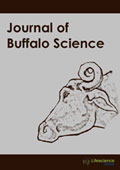|
|
Abstract: Meat and meat products share an important status among the various food products because of their high biological value with the goodness of nutritional compounds. Meat is a perfect source of protein along with minerals, vitamins, amino acids, essential fatty acids and many other specific nutrients. Socio-economic factors have to lead to a change in lifestyle, which in turn has increased the demand for ready to eat products, among which meat products are also rapidly gaining attraction of consumers. Although these meat products have good nutritional value, they generally contain a large amount of fat and added salts but are lack of dietary fibre which leads to various health problems in human consuming meat and meat products. Lack of dietary fibre in meat products gives birth to coronary heart diseases, diabetes, high blood pressure and intestinal cancer etc. Consumers are growing their consciousness towards the health aspect without compromising on nutritional benefits. Therefore, meat products fortified with significant levels of dietary fibre has been suggested. 28-36 g/day dietary fibre is recommended and which can be met by their incorporation in the diet of people consuming meat and meat products. The insoluble part of dietary fibre helps in regulation of intestinal function whereas soluble dietary fibre regarded as helpful in lowering cholesterol level by absorbing glucose in the intestine. Another critical problem concerning meat and meat products is the lipid oxidation which reduces the shelf life of product during storage. Natural antioxidants are suggested for retarding lipid oxidation and ultimately enhancing the shelf life of the product under storage. Synthetic antioxidants are losing publicity because they have revealed several toxicological effects during various studies. Thus there is a growing trend of use of natural antioxidants along with the dietary fibre obtained from plant sources in meat and meat products. Various food wastes such as fruit and vegetable by-products from food processing industries can serve the purpose of dietary fibre as well as natural antioxidants because of the polyphenolic compounds present in them. Generally, these by-products from fruit and vegetable processing industries are cheap, and their utilisation develops indirect income generation. The utilisation of vegetable and fruit wastes as a source of dietary fibre and natural antioxidants also reduces pollution to some extent which might be caused by their disposal. Thus along with waste reduction, cost reduction in economic terms, it also helps the environment by decreasing the load of their disposal. The incorporation of these by-products from various plant sources attracts consumers as they improve quality attributes viz. physicochemical, microbiological and organoleptic properties in meat and its products with health benefits and hence gives satisfaction to the consumers regarding their health consciousness. Keywords: Meat products, agricultural waste, value addition, health. |





